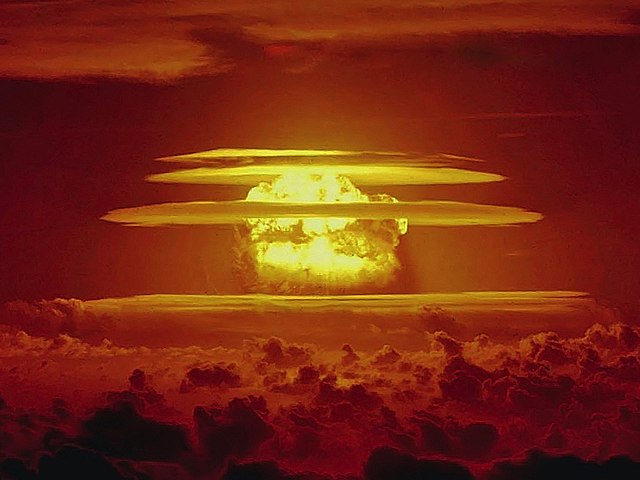Project 596 was the first nuclear weapons test conducted by the People's Republic of China, detonated on 16 October 1964, at the Lop Nur test site. It was a uranium-235 implosion fission device made from weapons-grade uranium (U-235) enriched in a gaseous diffusion plant in Lanzhou.
The mushroom cloud from the test
Satellite image of the Lop Nur test site taken by an American KH-4 Corona intelligence satellite on 20 October 1964, 4 days after the 596 test.
Zhou Enlai announcing the success of the test.
Nuclear weapons tests are experiments carried out to determine the performance, yield, and effects of nuclear weapons. Testing nuclear weapons offers practical information about how the weapons function, how detonations are affected by different conditions, and how personnel, structures, and equipment are affected when subjected to nuclear explosions. However, nuclear testing has often been used as an indicator of scientific and military strength. Many tests have been overtly political in their intention; most nuclear weapons states publicly declared their nuclear status through a nuclear test.
The mushroom cloud from the Castle Bravo thermonuclear weapon test in 1954, the largest nuclear weapons test ever conducted by the United States
Subcritical experiment at the Nevada National Security Site
The Phoenix of Hiroshima (foreground) in Hong Kong Harbor in 1967, was involved in several famous anti-nuclear protest voyages against nuclear testing in the Pacific.
The first atomic test, "Trinity", took place on July 16, 1945.







